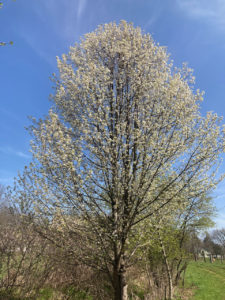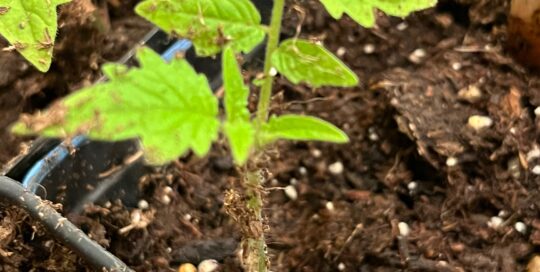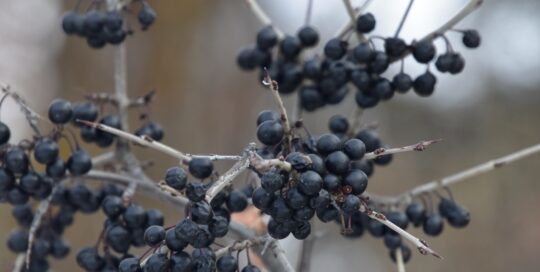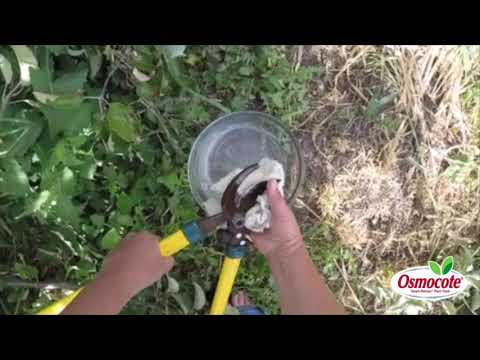What’s so Bad about Bradford Pears?
Views: 1140

Visiting Ohio in the middle of April, the white trees blooming prolifically caught my eye. Living in Montana for a longer time than my youth in the Midwest, I wasn’t quite sure what it was from a distance. It didn’t take long to realize it is the infamous Bradford pear. For years I’ve heard cries against the Bradford pear, Pyrus calleryana, yet had no idea why people would loath a seemingly beautiful, early-blooming tree.
How Did They Get Here?
Bradford pears, also called Callery pears, were brought to the eastern United States as early as the early 1900s from Asia, and were initially popular for municipal and residential plantings. Early on, they seemed ideal. They grew rapidly, didn’t fuss much about soil conditions, and produced beautiful white flowers in the spring. They’re also very colorful in the fall. What’s not to love, right?
But then they took off, cross-pollinating with cultivated pears and spreading into areas where they are not wanted. Plus, they are actually detrimental to native ecosystems.
What’s So Bad about Bradford Pears?
The pears were often planted along boulevards and in groups, which is where of one of the most distinguished characteristics is very noticeable. The flowers, regardless of how pretty they are, smell like rotting fish to many people. There is a Bradford pair on the family farm, and sure enough, it did not smell sweet!
One of the more surprising characteristics is how they are not utilized by caterpillars. One would think an early blooming tree would be a boon to young caterpillars, but they simply do not feed upon it. There was a study done by Smithsonian Conservation on feeding patterns of caterpillars between types of oaks and the Bradford pear. In its simplest form, the researcher found 410 caterpillars of 19 different species on the oak and only one caterpillar on the Bradford pear. That’s shocking.
Attracting Birds: Bringing Life to Your Winter Garden
Of course, if there are no caterpillars on the tree, the birds won’t be there. They need a consistent food source when raising their brood. Obviously, the Bradford pear is not it.
It turns out that they’re also weak trees. Although prolific, they only live about 20 years. And during that time their branches frequently break. This makes a mess, plus never park your car below one.
Crowding Out Everything Else
Another noted characteristic of the Bradford pear is how the canopy of the tree shades out everything during the summer allowing very few plants below its branches. In the fall the leaves drop and stay, further affecting the growth of any underbrush.
At one point, nurseries offered a supposedly sterile version of this pear, but as Ian Malcolm in Jurassic Park so wisely stated, “Life will find a way.” Over a matter of years and cross pollination, these trees often produced fruit. Then birds fed upon the pears, furthering spreading them.
Bradford Pear – University of Maryland Extension
How to Eliminate Them
Permanently removing a Bradford tree is not an easy task. If you cut them or mow them, they continue to grow from the roots. One recommendation is to apply glyphosate to the remaining stump within 20 minutes of cutting it down. This is best done in the fall when the tree is pulling nutrients into the roots. If it doesn’t send up shoots next spring, you were successful.
For saplings, keep cutting them during the summer to prevent them from blossoming and producing fruit. Or herbicide can also be used, although it’s difficult to apply enough to the pear without damaging surrounding vegetation. It’s also not a quick way to kill them.
There are many agencies throughout the eastern part of the United States that are basically offering a bounty on the Bradford pear. In some places they will give you a replacement tree for every pear that you remove. Check with your local Extension office or your city arborist for any of these programs.
While Bradford pears are definitely beautiful when you are flying in over an area, their looks are deceiving. These are truly one of those bad characters that we need to eliminate.
Meet Amy Grisak
Amy is a freelance author and photographer in Great Falls, MT who specializes in gardening, foods, and sustainable agriculture. She provides information on every kind…
Amy's Recent Posts

Why are my seedlings failing?








